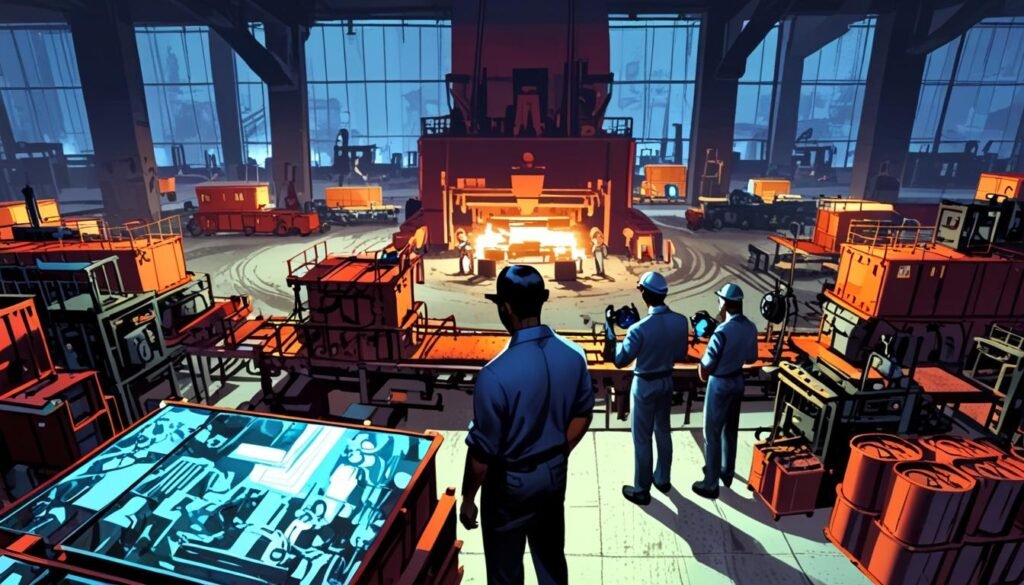**Washington DC**: US senior officials urgently address economic and supply chain risks after China’s rare earth export curbs amid escalating trade war tensions. The restrictions threaten defence and high-tech industries reliant on rare earth elements, prompting deliberations on domestic mining, international deals, and strategic stockpile restoration.
Senior officials within the US administration are urgently addressing the economic risks posed by China’s recent restrictions on rare earth metal exports, according to sources familiar with internal deliberations. These restrictions have emerged amid escalating tensions stemming from President Donald Trump’s trade war, which threatens to disrupt supply chains vital to industries ranging from defence contractors to manufacturers of military drones, consumer electronics, and electric vehicles.
China currently dominates global supply of 17 critical rare earth elements essential for production across these sectors. “China knows this is a very strong bargaining chip, and it is why they are playing it,” said Ashley Zumwalt-Forbes, formerly deputy director for batteries and critical materials at the US Department of Energy under the Biden administration. She emphasised the severity of the situation, noting, “What makes these bans particularly dangerous is, oftentimes one of these materials is a single point of failure for entire supply chains, and its production rests solely in China.”
The export curbs were implemented by Beijing this month in retaliation to the steep tariffs imposed by the Trump administration, heightening concerns about the potential for significant economic fallout. Multiple agencies within the US government—including the National Security Council, National Economic Council, Council of Economic Advisers, Commerce Department, Energy Department, and Office of the Trade Representative—have been actively engaged in deliberations to manage the consequences.
President Trump has recently adopted a softer tone, expressing willingness to negotiate a deal that would maintain the flow of these crucial materials into the US market. However, companies reliant on these rare earth elements are increasingly anxious. “Some companies have maybe 40 to 60 days of stock left,” said Zoe Oysul, senior policy analyst at SAFE, a US energy and supply chain security advocacy group. “If China does not approve their export contracts, they are concerned about whether they will be able to continue to manufacture when that stock is gone.” Presently, many manufacturers are relying on existing reserves and are exploring recycling and reprocessing methods that could bypass the current Chinese export restrictions.
Despite awareness of this supply vulnerability dating back several years and across multiple US administrations, the government currently lacks adequate alternatives. Trump had previously signed an executive order emphasising the importance of creating rare earth supply chains outside of China prior to launching his trade war. Still, the recent export limits by Beijing have intensified fears about imminent supply chain disruptions.
US officials are reportedly considering a range of measures to alleviate the issue, including accelerating domestic mining, processing projects, and increasing financial support for such initiatives. There are also efforts to negotiate trade agreements with other countries to reduce reliance on Chinese processing capabilities. Gracelin Baskaran, director of the Critical Minerals Security Program at the Centre for Strategic and International Studies, characterised the challenge as structural: “The US is looking for a long-term, sustainable, structural solution rather than a Band-Aid.”
However, expanding supply chains outside China is a complex and costly endeavour that will require significant time to mature. Pini Althaus, CEO of Cove Capital, which invests in critical mineral supply projects worldwide, estimates such development could take 10 to 15 years. He noted that China had effectively weaponised its control over rare earth metals well before the onset of the current trade war, a factor that underpins Beijing’s confidence in enduring a prolonged dispute. “The writing has been on the wall for a long time,” he said.
China’s strategy has precedent; in 2010, it banned rare earth exports to Japan during a diplomatic dispute, significantly affecting manufacturing sectors such as Japan’s automotive industry. More recently, Beijing restricted exports to the US in response to export controls on advanced computer chips under the Biden administration. Despite attempts by firms in other parts of the world to establish supply chains independent of China, progress has been limited due to the low profit margins, environmental challenges of mining and processing these materials, and historical offshoring of production to China.
Althaus remarked on the global nature of the issue, highlighting that European firms are also grappling with projected shortfalls in rare earth supplies. The US does maintain strategic stockpiles of rare earths designated for national security emergencies, but these have declined substantially from Cold War-era reserves of approximately $50 billion worth of materials to current holdings valued at around $800 million. Zumwalt-Forbes reflected on this reduction: “During the Cold War, we had $50 billion of strategic materials stashed away. It was to ensure the US and allied nations could supply the industrial base in the event of a conflict.”
As the trade tensions and export restrictions continue to evolve, US officials and affected industries are navigating a complex landscape to safeguard access to these critical resources pivotal for national defence and high-technology manufacturing.
Source: Noah Wire Services


